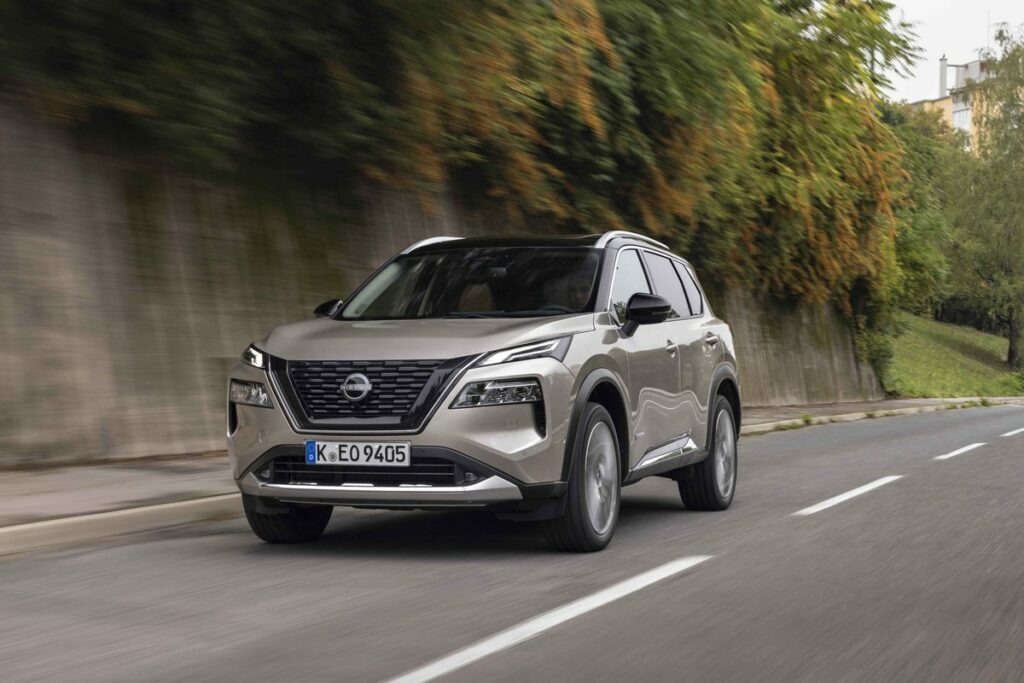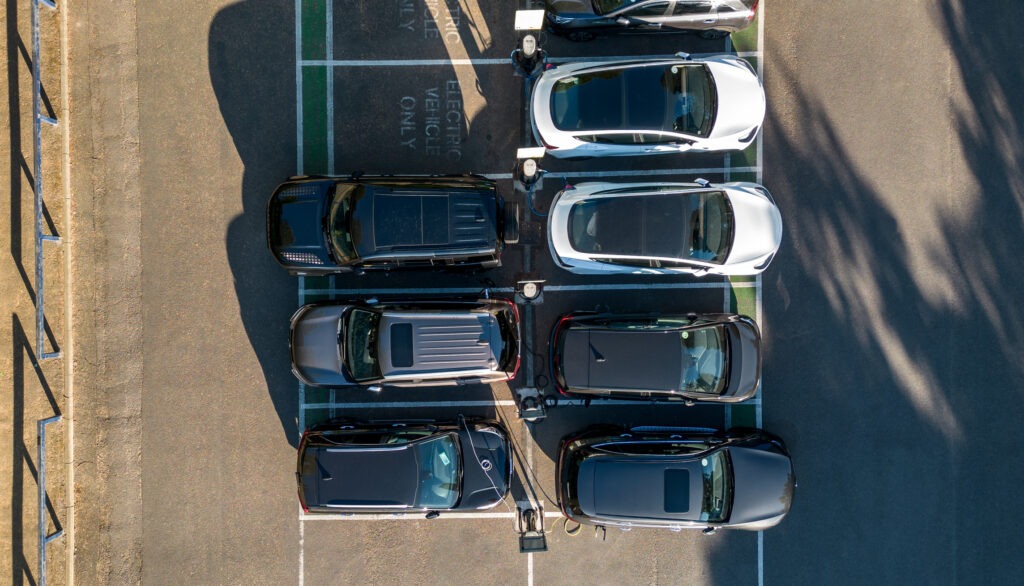European new-car market endures anticipated January payback
22 February 2023

The EU new-car market started 2023 with its sixth consecutive month of year-on-year growth but the 11.3% gain in January was weaker than the 12.8% rise recorded in December.
There was one more working day last month than in January 2022 and so the growth rate was only about 7% on an adjusted basis. Nevertheless, Autovista24 had anticipated this payback as the bloc ended 2022 on a positive note, buoyed by the year-end boom in new-car registrations in Germany.
The latest data released by the European Automobile Manufacturers’ Association (ACEA) show that 760,000 new cars were registered in the EU last month. Registrations in the wider European region increased 10.7% year on year, topping 910,000 units.
The major European markets all expanded last month, with double-digit gains in Italy, Spain, and the UK. However, Germany contracted by 2.6% after a 38.1% surge in December, breaking the five months of consecutive growth seen in the second half of 2022.
The pull-forward effect of lower electric-vehicle (EV) incentives since 1 January in Germany and, to a much lesser extent, France, means the European market share of EVs tumbled from 22.9% in full-year 2022 to 17.4% in January. Battery-electric vehicles (BEVs) gained a 10.3% share (down from 14% in 2022) and plug-in hybrids (PHEVs) 7.1% (down from 9% in 2022).
Petrol cars and hybrid-electric vehicles (HEVs) had a slightly higher share last month than in 2022 but the demise of diesel continued. The beleaguered fuel type only accounted for 14% of new-car registrations in January, down slightly from the 14% share they commanded in 2022.
Germany slightly exceeded Autovista24’s expectations for the month, as did the UK. Spain was in line with projections but France and Italy were weaker than expected. The net effect was that the volume of new-car registrations across all five markets, over 615,000 units, was almost 20,000 units – or 2.9% – lower than predicted.
Weaker European outlook
Europe’s new-car market will continue to rely heavily on fulfilling orders placed before energy costs and inflation started to rise last year. However, the cost-of-living crisis will reduce order intake and with higher deliveries than expected at the end of 2022, especially in Germany, more payback is expected in the coming months. Accordingly, Autovista24 has lowered its 2023 forecast by 270,000 units. At 12.39 million new-car registrations, this represents 9.8% year-on-year growth.
Autovista24 anticipates an ongoing recovery of the continent’s automotive sector in the medium and long term but has also downgraded the region’s outlook for 2024 and 2025. The volume of new-car registrations in Europe is not expected to return to pre-pandemic levels until the middle of the next decade.
Germany exceeds expectations
A total of 179,247 new passenger cars were registered in Germany last month – the second lowest level of registrations seen in January since 1991. Compared to pre-pandemic 2019, this figure is down 33%. Meanwhile, the seasonally-adjusted annualised rate (SAAR) plummeted from 4.21 million units in December to 2.51 million units in January.
Nevertheless, the market slightly exceeded Autovista24’s forecast of 170,000 new-car registrations during the month. Slow growth of 3.3% is predicted for the year, with the German new-car market expected to record 2.79 million units, not least because of lower order intake. Domestic order intake was down 37% year on year among German car manufacturers in January.
EV demand could see a level of stagnation as rising electricity prices and lower subsidies are expected to impact interest among consumers who might now think twice about buying a new electric car.
Gains in Spain and the UK
A total of 64,147 new cars were registered in Spain during January, according to the national industry association ANFAC.
‘The strong increase in sales at the start of the year actually reflects how unstable the automotive market is since it is mainly due to the fact that, in January, units have been counted that were not registered in December due to problems with the transport of vehicles from factories and logistics centres to dealers. Therefore, we cannot speak of a change in trend because the context that weighed down the market remains the same and what is foreseeable is that, in the coming months, we will once again see a very low level of registrations,’ explained Raúl Morales, communications director of Faconauto.
Autovista24 calculates that the 51.4% year-on-year growth falls to 44.2% when adjusted for the extra working day last month and the SAAR reduced from 961,000 units in December to 873,000 units.
‘It must be taken into account that January 2022, with which we are making the comparison, was the second worst January in more than two decades due to the chip crisis. Therefore, we have to receive this improvement with caution because the tensions in the supply chain and in the logistics chain are still present,’ commented Tania Puche, communications director of GANVAM.
Against this backdrop, Autovista24 has reduced its 2023 forecast to 917,000 new-car registrations, equating to growth of 12.8%. This falls 27% short of the volume achieved in 2019 and the Spanish market is not expected to exceed one million units again until after 2025.
New-car registrations in the UK increased 14.7% year on year last month to 131,994 units. This aligns with Autovista24’s forecast of 130,000 registrations but represents the weakest growth rate since September 2022, despite there being one more working day than in January 2022.
Adjusted for working days, Autovista24 calculates that the market grew 9.2% year on year, following double-digit gains in the last three months of 2022. The SAAR receded to 1.9 million units from 2.12 million units in December.
Although the UK’s new-car market aligned with Autovista24’s expectations last month, the outlook remains particularly uncertain. Against the backdrop of persistent inflation and expected rises in interest rates and energy prices, Autovista24 has reduced its 2023 forecast by 15,000 units to 1.81 million, equating to growth of 12.4%. This would be 21.5% lower than in 2019.
France and Italy underperform
According to data released by the CCFA, the French automotive-industry association, 111,940 new cars were registered in the country last month. However, the year-on-year growth of 8.8% translates to an upturn of only 3.8% when adjusted for the additional working day compared to January 2022. Furthermore, the SAAR retreated to 1.78 million units, from 1.81 million in December.
Autovista24 expected this loss of momentum as the reduction in EV subsidies from 1 January pulled some registrations forward into late 2022, with the monthly SAAR higher in December than in any other month last year. Although the effect was far less dramatic than the impact of lower EV incentives in Germany, the EV share was at a record 25% in December 2022, but fell back to 22% last month. This was driven by higher registrations of BEVs, which gained 16% of the market in December but receded to 13% last month according to CCFA data. The share of PHEVs, however, has remained at 9% since October.
Autovista24’s outlook for 2023 has been subtly reduced to 1.75 million registrations, equating to growth of 14.6%. This is 20.8% lower than the 2.2 million new cars registered in 2019, prior to the COVID-19 pandemic.
Industry association ANFIA reports that 128,301 new cars were registered in Italy last month, up 19% year on year. Adjusted for the extra working day, however, the 13.3% growth rate was weaker than the adjusted 26.7% upturn in December. Moreover, Autovista24 calculates that the SAAR tumbled to 1.34 million units from 1.65 million.
As the 2023 incentives for EVs only became available from 10 January, this derailed their registrations last month and impacted the wider market. EV registrations increased by a mere 1.1% year on year and captured only 7.3% of the market, down from 8.7% in 2022. BEV registrations fell 11.2%, gaining only 2.5% of the market, down from 3.7% in 2022. PHEVs, on the other hand, grew by 9.2% year on year and accounted for 4.8% of new-car registrations in January, but this was still lower than the 5% share they held in 2022.
As buyers take advantage of the new incentives, EV registrations will gain support and so will the wider market in the coming months but additional funding will be required to maintain the momentum. In this context, Autovista24 has reduced its 2023 outlook for Italy to below 1.5 million units, equating to growth of 13.8%. At this level, the new-car market would be 21.8% smaller than in 2019.



